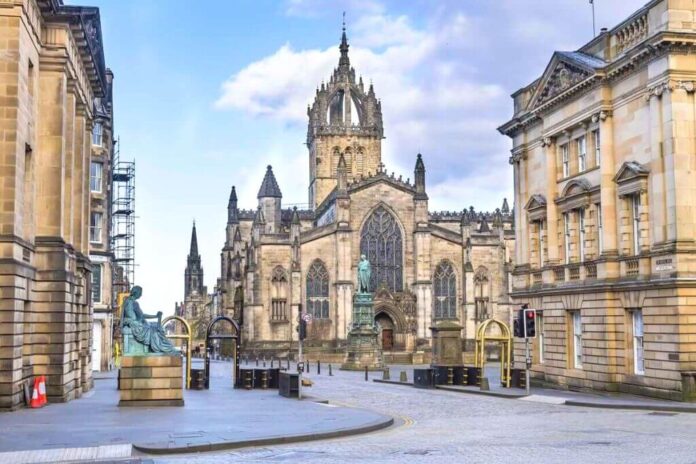Edinburgh has a higher percentage of historic buildings than many other European capitals, and some of these old structures date back more than five centuries. For those of you who enjoy history and architecture, the capital is home to a variety of fascinating languages, award-winning outdoor landscapes, castles, and other distinctive goods like whisky. Here are 9 of the city’s oldest structures.
1. St Giles Cathedral
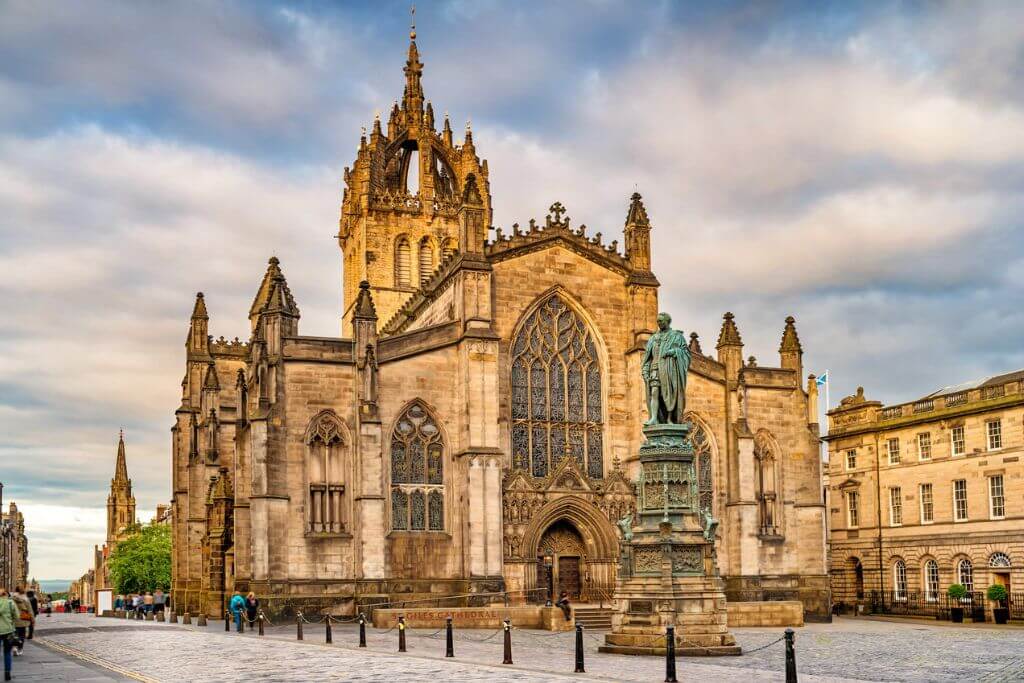
One of Edinburgh’s oldest structures is St Giles’ Cathedral, which dates back to the 12th century. Early on, St. Giles’ was merely a tiny stone church that stood roughly where the present-day nave is now. This church was destroyed by an English army attack in the fourteenth century, but it was afterwards magnificently rebuilt, giving it its modern appearance and distinctive crown steeple.
Despite the fact that the majority of the church is modern, there are some deeply buried old parts. About 200 years ago, the ancient gateway to St. Giles still stood. St. Giles’ has maintained its status as a cathedral despite not serving as a seat of bishops since 1638, much like Glasgow Cathedral.
2. St Margaret’s Chapel
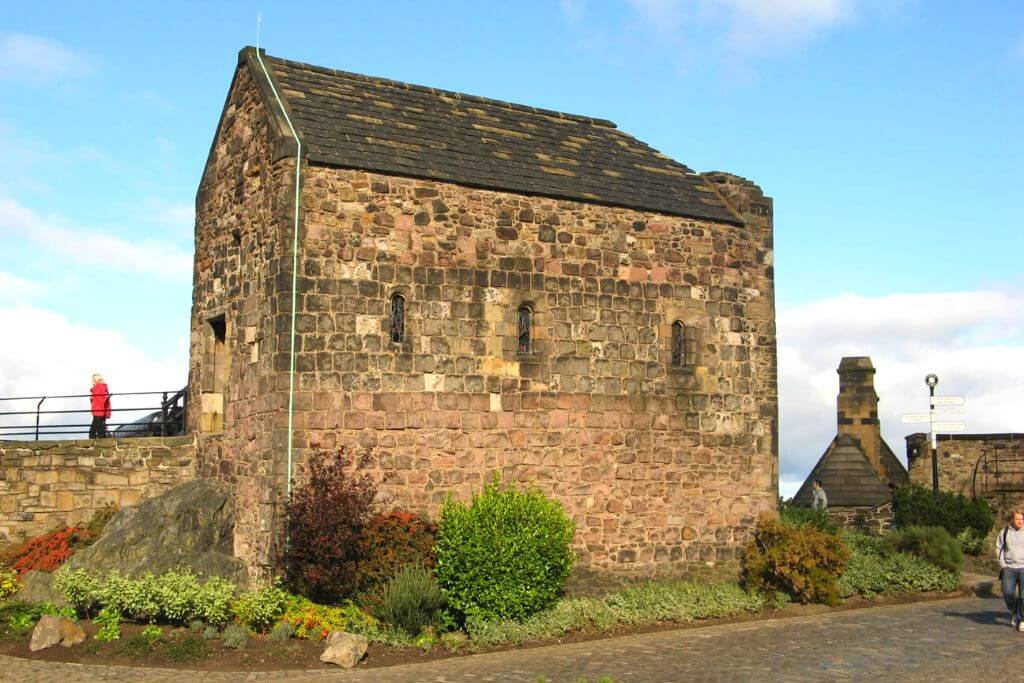
St. Margaret’s Chapel, which King David is thought to have finished in 1130 in memory of his mother, Queen Margaret, has seen quite a few renovations in Edinburgh. In fact, it has witnessed every development in the city as it is the oldest structure there. When you consider that Edinburgh Castle has traditionally been the most besieged area in all of Britain, the chapel’s placement within the castle’s walls may seem like a safe place to be.
It’s actually rather amazing that the chapel is still intact when you consider the Protestant Reformation of the 1500s and the fact that it sat vacant for centuries afterward, save for a brief period when it served as a gunpowder storage facility. Since then, the chapel has undergone two beautiful restorations, one in 1922 and one by Queen Victoria in the 1850s, who made the chapel functional once again and added stained glass to its five windows.
Modern weddings and baptisms are frequently held at the 900-year-old site of worship, despite the somewhat small chapel’s limited capacity of 20 people.
3. Trinity Apse, Chalmers Close
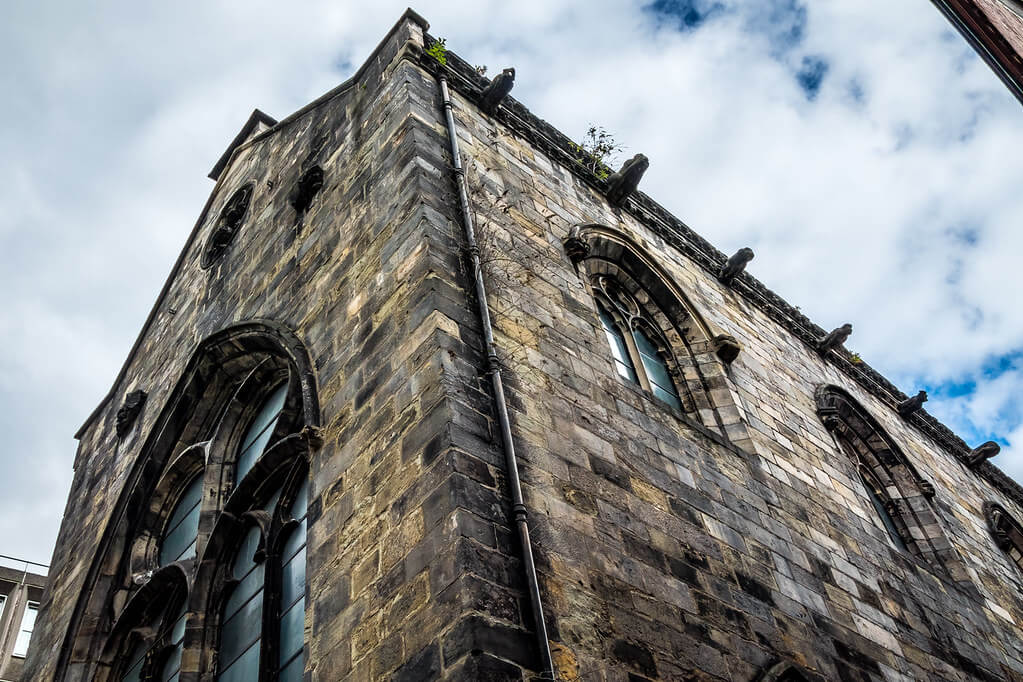
The historic Trinity College Kirk, built in 1460 on the eastern banks of the Nor’ Loch, is now only known as Trinity Apse. Mary of Gueldres, King James II’s consort, founded the kirk as well as an adjacent hospital. Even the Reformation failed to disrupt the small kirk for many years. The Industrial Revolution followed.
In order to make space for an expansion of Waverley Railway Station, the original kirk was destroyed in the 1840s. Each piece of the kirk stone was numbered and placed on Calton Hill in preparation for its gradual relocation to a new location. Sadly, it would be thirty years before it was decided to rebuild the kirk, by which time many of the numbered stones vanished.
In Jeffrey Street, a new church was subsequently constructed; however, it was also destroyed in 1964. Several of the painted numbers from when the church was disassembled are still visible in the Trinity Apse, a small portion of the restored Trinity College Kirk. Between High Street and Jeffrey Street, on Chalmers Close, is where you’ll find the apse.
4. Huntly House
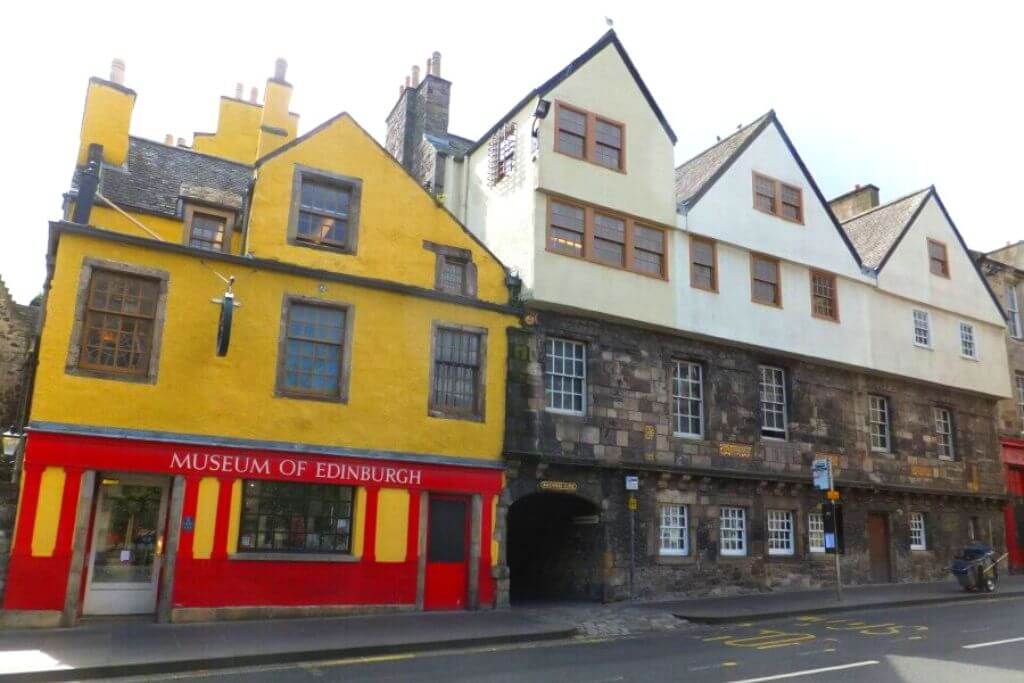
Huntly House shares overhanging gables with John Knox House and Moubray House further up the Royal Mile. It was constructed about 1570, although it still has much of its historical charm. The Marquis of Huntly, who briefly resided here, is said to have inspired the name of the place in the 17th century.
Due to the Latin inscriptions found on its exterior, the house is occasionally referred to as the “speaking house.” Over the years, other inscriptions have been added. The Edinburgh Museum is now housed in Huntly House.
5. John Knox House
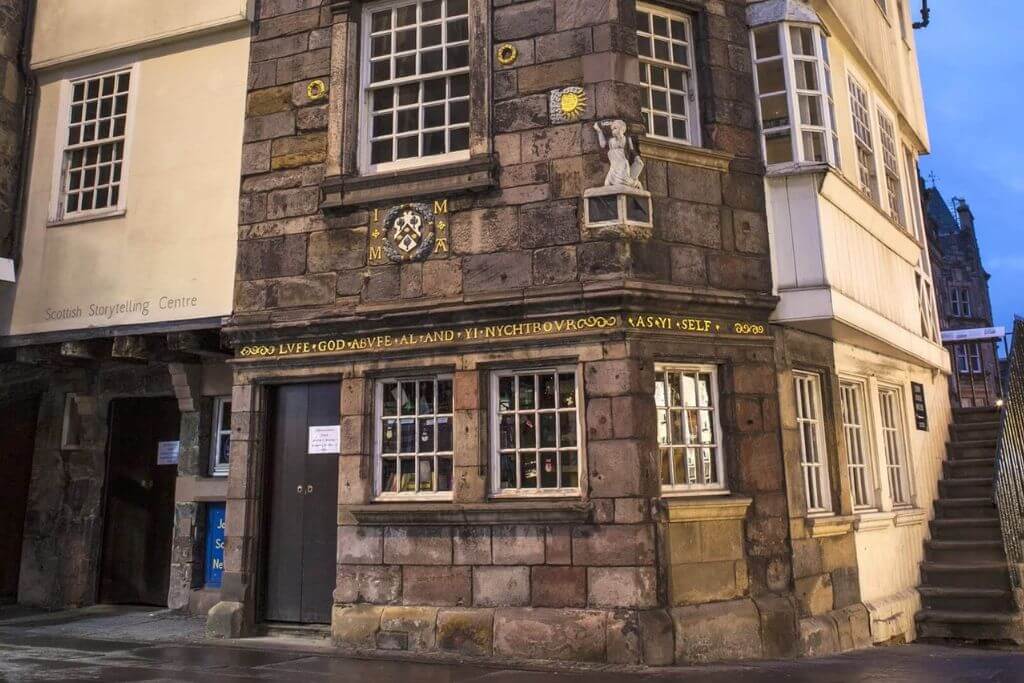
The Protestant reformer John Knox is believed to have resided at and owned John Knox House on the High Street, one of Edinburgh’s most ancient and picturesque old homes, albeit there is no proof to back this up. Formerly owned by Mr. Walter Reidpath, who left it to his heirs, the house was built around 1490.
Since its construction, John Knox House has maintained its “overhanging” upper levels, a characteristic once common in medieval Edinburgh architecture. If John Knox ever stayed there, it was probably just for a few months during the lengthy siege of Edinburgh Castle in the 16th century, if at all. The renowned Scots clergyman allegedly passed away here, according to some.
6. Moubray House
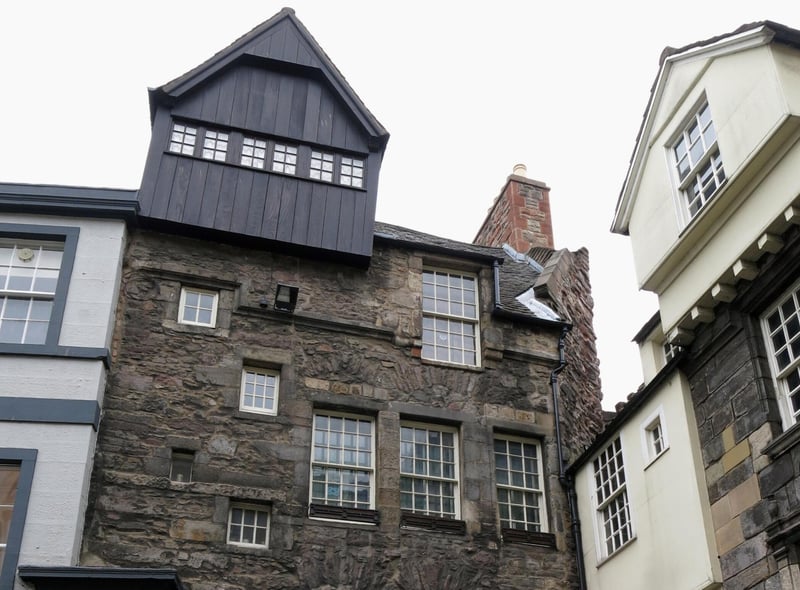
Another historic home, Moubray House, is located in the same High Street nook as John Knox House. It was constructed in the year 1477 by a man named Robert Moubray and later served as both a bar and a bookstore.
Daniel Defoe, a renowned author, lived in this area while serving as editor of the Edinburgh Courant. Early in the 17th century, Moubray House’s front was renovated, although much of the inside is still as it was.
7. Merchiston Tower
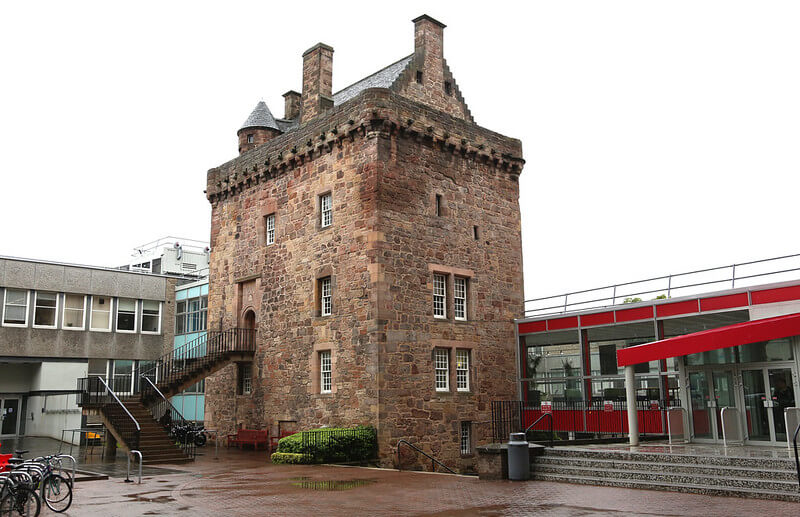
While not being in the Old Town, this structure is noteworthy because of its age. The second Laird of Merchiston, Alexander Napier, constructed this five-story L-plan tower, also known as Merchiston Castle, in about 1454.
John Napier, who created logarithms, is said to have been born here around 1550 in a structure that belonged to the Napier family for many decades. How fitting that the tower is currently located on the premises of Napier University in the present day. A rocky outcrop upon which the tower was constructed is still visible on two of its sides.
8. The Magdalen Chapel
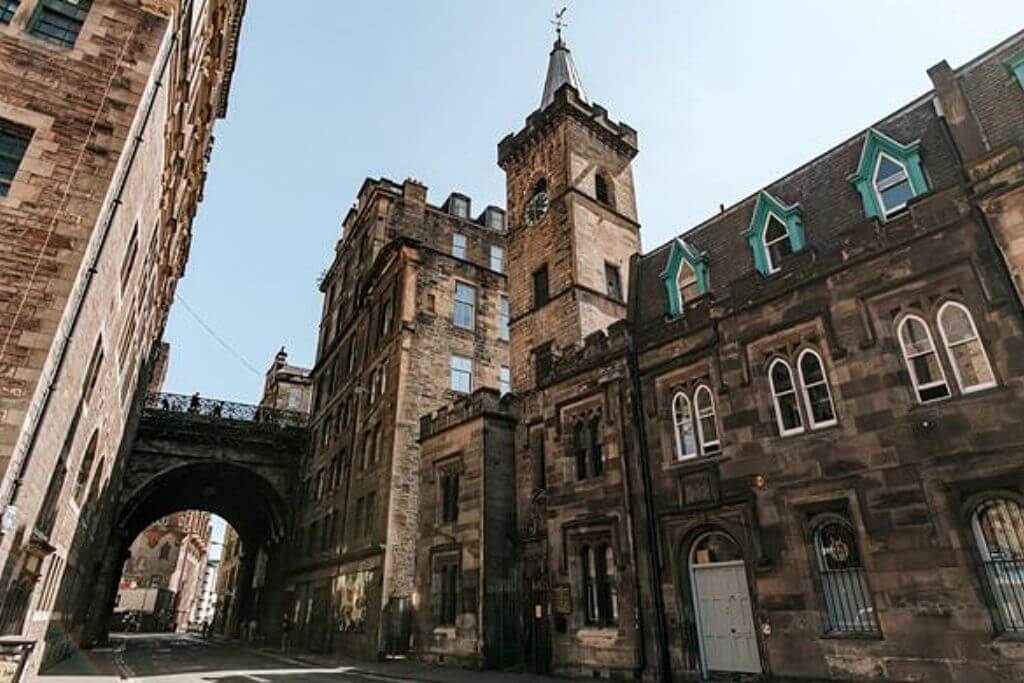
The charming Magdalen Chapel is located at the beginning of the Cowgate, just to the east of the Grassmarket. Michael MacQueen, who left the chapel a legacy and was buried here not long after it was finished, had it constructed between 1541 and 1544. The only surviving piece of pre-Reformation stained glass in Scotland can be seen in Magdalen Chapel, the final Roman Catholic chapel to be built in Edinburgh before the Reformation.
This is especially astounding given that the chapel is known as the “cradle of Presbyterianism” since it hosted the first-ever meeting of the newly formed Church of Scotland in 1560. One of the 42 clergymen there was John Knox. The Scottish Reformation Society’s current headquarters are located in the chapel.
9. Canongate Tolbooth
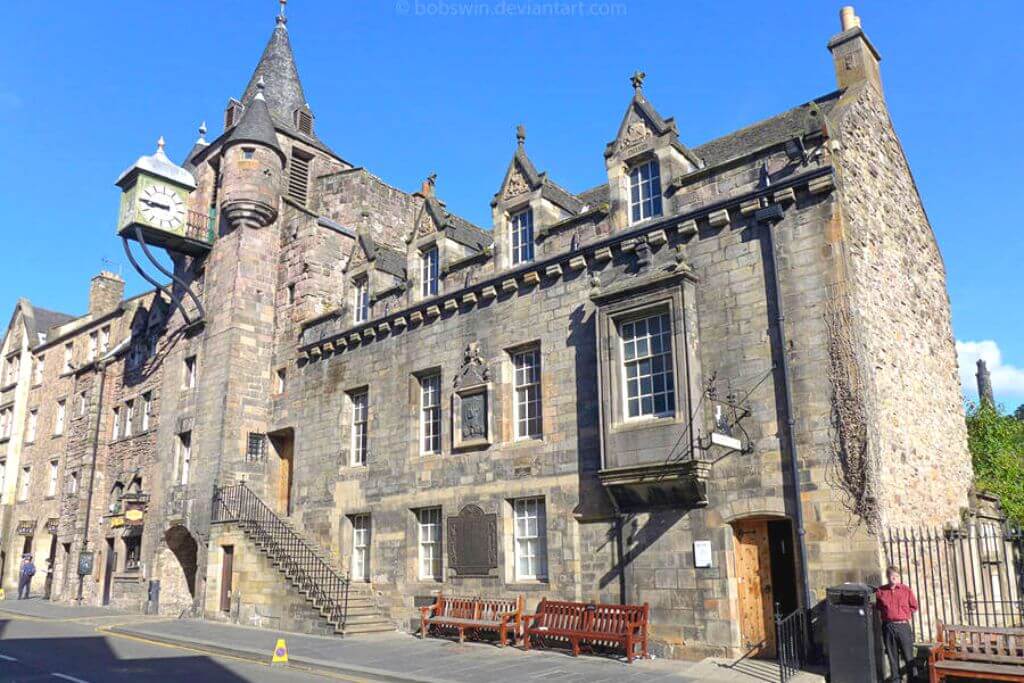
The Canongate Tolbooth is one of Edinburgh’s older structures that is frequently photographed. It was constructed in 1591, when the Canongate burgh was still an independent municipality from Edinburgh, and it operated as the district tolbooth, which included a courtroom, a jail, and a venue for public gatherings.
The most noteworthy renovation of the Tolbooth over the centuries, which included its recognizable clock in 1875, was carried out by City Architect Robert Morham. The People’s Story Museum is now housed in the structure, which has a Category A designation.
